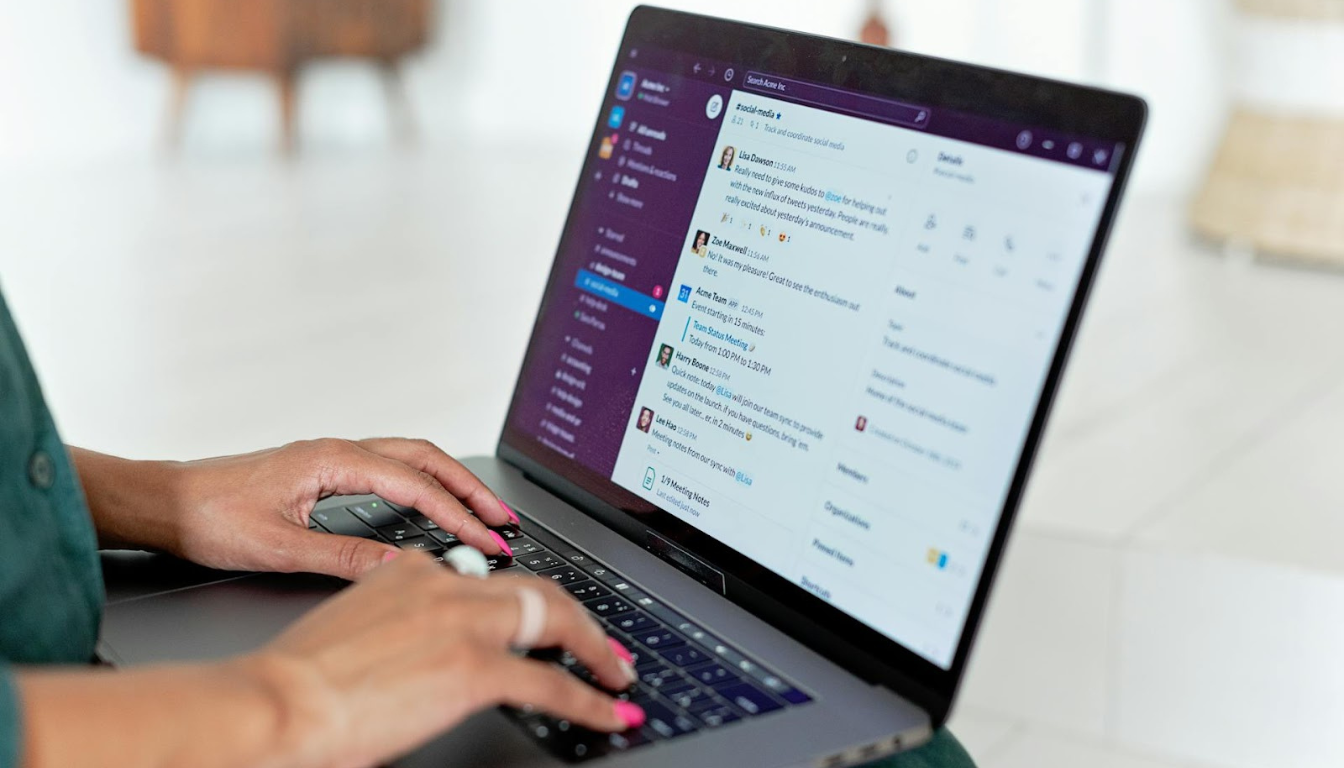Mastering Meeting Remotely: Tips and Best Practices for Success

Struggling to make your remote meetings efficient and engaging? You’re not alone. In this guide, we’ll provide essential tips and best practices for meeting remotely. Meeting remotely is especially valuable for employees working remotely, as it enables them to stay connected and collaborate effectively even when they are in different locations. Learn about the best tools, preparation methods, and engagement strategies to ensure your virtual meetings are productive. Whether you’re a team leader or a participant, this article will help you navigate the challenges of remote interactions.
Key Takeaways
- Remote meetings enhance collaboration and productivity for distributed teams, allowing participants to connect from different locations.
- Essential tools for effective remote meetings include high-quality audio/video features, noise suppression, and user-friendly platforms.
- Preparation, engagement strategies, and post-meeting follow-ups are vital for successful remote meetings, ensuring clear communication and accountability.
- Remote meetings can help organizations save a significant amount on travel and office-related expenses.
Understanding Remote Meetings

Remote meetings are virtual gatherings facilitated by technology, enabling participants to communicate from different physical locations. They are essential for distributed teams as they foster collaboration and alignment, offering the flexibility required in modern flexible work environments, including remote work. Unlike in-person meetings, remote meetings allow participants to join from anywhere, making it easier to connect with team members across the globe, especially in remote or hybrid teams.
The flexibility of remote meetings is a significant advantage. Team members can join from different time zones, saving travel time and expenses while still maintaining effective communication. However, remote meetings can sometimes lack the depth of face-to-face interactions, making it crucial to implement strategies that enhance engagement and connection. Remote meetings also make it possible for colleagues who have never met in person to build relationships and collaborate effectively through digital interactions.
Despite these challenges, remote meetings enhance communication and collaboration when executed correctly. They enable distributed teams to stay aligned, share updates, and make collective decisions. With the right approach, remote meetings can be a powerful tool for maintaining productivity and fostering a sense of team unity.
Essential Tools for Remote Meetings

The shift towards hybrid work models has contributed to the increasing prevalence of virtual meetings, allowing connectivity and productivity regardless of location. To ensure successful virtual meetings, it is crucial to have the right tools in place, including:
- High-quality audio and video features for maintaining engagement and clarity during meetings
- Bandwidth controls to manage network usage
- Noise suppression to enhance the meeting experience, especially in a hybrid model.
Virtual meetings can take various forms, such as video conferencing, web conferencing, web conference, and webinars, each serving unique use cases and benefits:
- Video conferencing allows for high face-to-face interaction, enhancing personal connections.
- Web conferencing and web conferences are ideal for presentations and training sessions.
- Webinars are perfect for delivering content to large audiences.
Flexibility is another key aspect of remote meetings. Attendees can join an online meeting using a landline phone or a mobile device, such as a smartphone or tablet, equipped with video capabilities, ensuring that everyone can participate regardless of their technical setup.
Leveraging the right tools and platforms, including online meeting software and remote meeting tools, is essential for scheduling and conducting online meetings. Online meeting software enables participants to join meetings from various devices and platforms, helping remote teams communicate effectively and maintain productivity.
Types of Remote Meetings
Remote meetings come in various forms, each designed to enhance efficiency and communication among team members. One popular type is video conferencing, which offers:
- High face-to-face interaction with participants able to see each other
- A visual component that helps build personal connections
- Fostering a sense of team unity
Video calls are now a standard way for remote teams to collaborate and share visuals, often replacing in-person or on-site meetings.
Video conferences are highly interactive meetings that allow participants to see and hear each other in real time, making them ideal for relationship building.
Teleconferencing is another form of remote meeting, which is audio-only. This format is ideal for quick updates and discussions where video is not necessary. A video meeting is particularly useful for project collaboration and maintaining engagement in distributed teams.
Webinars, on the other hand, serve as structured meetings often led by hosts and are aimed at delivering content to large audiences. They are particularly valuable for presentations and training sessions. Video meetings are a core component of remote communication, supporting productivity and collaboration.
- Web conferences enable online collaboration with features like sharing and whiteboarding, and may not always include face-to-face interaction.
Understanding the different types of remote meetings helps teams choose the most appropriate format for their needs. Whether it’s a video conference for a detailed discussion or a webinar for a large audience, each type of meeting fosters effective communication and collaboration. A virtual room is a digital space where participants gather for online meetings, serving as the virtual equivalent of a physical conference room.
Preparing for a Successful Remote Meeting
Preparation is key to ensuring a successful remote meeting. The first step is to determine if a meeting is necessary. Sometimes, discussions can be handled through other communication methods, saving time and resources. If a meeting is required, sending out the agenda ahead of time helps participants prepare and engage more effectively. In addition to the agenda, preparing clear talking points in advance ensures the meeting stays focused and productive.
Scheduling meetings at convenient times for all participants, especially across different time zones, is crucial to maximize meeting attendees and participation. This consideration ensures that everyone who attended can join the meeting as a meeting host without any inconvenience, leading to a more productive session and save time. Additionally, it is important to have a clear schedule to facilitate this process.
Choosing the appropriate tools and platforms for virtual meetings can significantly enhance communication effectiveness. Using the right virtual meeting software ensures a smooth and efficient meeting process, fostering collaboration and achieving desired outcomes through virtual meeting platforms and desktop apps.
Creating an Effective Meeting Agenda
A well-crafted meeting agenda is the backbone of successful virtual meetings. It keeps meeting attendees focused, ensures all key topics are addressed, and helps remote teams make the most of their time together. Start by clearly defining the purpose and objectives of your meeting—knowing what you want to achieve will guide the rest of your planning. List out the main topics or agenda items, and assign specific time slots to each, making sure to consider the time zones of remote employees so everyone can participate comfortably.
Distribute the agenda ahead of time to all participants, including remote team members, so everyone knows what to expect and can come prepared. This proactive approach not only increases productivity but also encourages engaging meetings, as team members are more likely to contribute when they know the discussion points in advance. By prioritizing a clear and concise meeting agenda, you set the stage for a focused, efficient, and collaborative virtual meeting experience.
Conducting Engaging Remote Meetings

To keep remote team meetings engaging, it is essential to focus on team engagement. Incorporating icebreaker activities can lighten the mood and foster interaction among participants. Using interactive tools like polls and quizzes can significantly boost overall meeting participation, making the sessions more dynamic and engaging.
Ways to enhance collaboration during meetings include:
- Allowing ample time for questions and mixing up the meeting format.
- Using screen sharing as a powerful tool to improve collaboration during remote meetings and information sharing.
- Encouraging employees to share personal updates to make the meeting atmosphere more connected and engaging.
- Designating a main presenter can help guide the meeting, keep participants focused, and ensure that key content is delivered effectively.
Recognizing team accomplishments during engaging meetings can significantly increase morale and engagement. Using engagement tools such as virtual games and team-building activities can strengthen connections among remote staff. Scheduling breaks during lengthy meetings can also help maintain attendee attention and keep the energy up.
Virtual Meeting Etiquette
Maintaining professionalism in virtual meetings is just as important as in person meetings. Virtual meeting etiquette helps create a respectful and productive environment for all meeting attendees, whether they are in the same room or connecting from different locations. Encourage participants to dress appropriately and choose a tidy, non-distracting virtual background, as these details contribute to a positive impression—even when not physically present.
Body language still matters in online meetings; making eye contact with the camera and sitting up straight can help convey engagement and attentiveness. As a meeting host, set expectations for participation, such as using video conferencing to foster face to face interaction and relationship building among remote or hybrid teams. Remind everyone to mute their microphones when not speaking to minimize background noise, and discourage multitasking to keep the focus on the meeting. By establishing and following clear virtual meeting etiquette, teams can ensure that every participant feels valued and meetings remain productive and professional.
Managing Meeting Time
Effective time management is essential for successful virtual meetings, especially when remote teams are spread across multiple time zones. Start by scheduling meetings at times that work for all participants, using virtual meeting software to streamline the process and send reminders. A clear agenda with designated time slots for each topic helps keep the meeting on track and ensures that all agenda items are addressed.
As the meeting host, it’s your responsibility to guide the discussion, gently steering participants back on topic if conversations drift. Encourage meeting attendees to be concise and focused on their contributions, and use meeting software features like timers or prompts to help manage the flow. By respecting everyone’s time and sticking to the schedule, you can increase productivity, reduce unnecessary delays, and create a more engaging meeting experience for all teams involved.
Meeting Security and Privacy
Protecting sensitive information is a top priority in virtual meetings, especially for distributed teams working remotely. When selecting a virtual meeting platform, look for robust security features such as end-to-end encryption, secure authentication, and the ability to control access for meeting attendees. Features like closed captioning and recording can enhance information sharing and accessibility, but it’s important to manage these tools responsibly to maintain privacy.
As the meeting host, set clear guidelines for meeting security and privacy, and communicate them to all participants before the meeting begins. Remind teams not to share confidential information outside the virtual meeting and to be mindful of who has access to meeting links and materials. By prioritizing security and privacy, you create a trustworthy environment where teams can collaborate openly and confidently, knowing their information is protected.
Overcoming Technical Issues in Remote Meetings
Technical issues are a common hurdle in remote meetings, but with the right preparation, they don’t have to derail your session. Ensure all meeting attendees have access to a stable internet connection and the necessary equipment, whether they’re joining from mobile devices or desktop apps. Choose a virtual meeting platform that offers helpful additional features like breakout rooms and screen sharing to support collaboration and engagement, especially in a hybrid work model.
As the meeting host, encourage participants to test their audio and video before the meeting starts, and be ready to troubleshoot common problems. Have a backup plan in place—such as a dial-in number or alternative platform—in case of unexpected technical issues. Providing clear instructions and technical support can help remote teams stay connected and productive, no matter where they’re working from. By being proactive and prepared, you can ensure a smooth and successful remote meeting experience for all participants.
Overcoming Challenges in Remote Meetings

Remote meetings often come with their own set of challenges. A common complaint regarding technical issues includes login problems, internet outages, and learning curves for new users. To overcome these, it is vital to ensure that all participants are familiar with the virtual meeting software and have a reliable internet connection.
Distractions during virtual meetings can arise from unmuted participants and background noise. Managing these distractions can be done by:
- Setting ground rules, like muting when not speaking, to help maintain focus.
- Accounting for different time zones.
- Recording meetings for those who cannot attend to ensure everyone stays informed.
Some participants may find virtual meetings less personable due to the lack of face-to-face interaction. Adjusting the meeting calendar and incorporating more interactive elements, such as virtual backgrounds, can help overcome this challenge, making remote meetings more effective and engaging for those who are not physically present.
Enhancing Team Connection Beyond the Screen

In-person gatherings can significantly enhance team dynamics and relationships, offering opportunities for deeper connections that remote interactions may lack. While remote settings often miss out on the spontaneous conversations and informal interactions that naturally occur in an office environment, corporate retreats serve as a powerful method for building trust and rapport among remote team members, allowing for informal interactions that strengthen bonds.
Regularly scheduled in-person meetings can help maintain a sense of belonging and commitment among remote employees. Participating in recreational activities together during corporate retreats can foster a positive workplace culture and enhance overall team morale during a team meeting.
Encouraging casual conversation or small talk can help build rapport and enhance team connections in virtual settings. Balancing virtual meetings with intentional face-to-face gatherings helps a hybrid team create strong work connections and improve body language collaboration while building relationships through nonverbal cues. Hybrid team leaders should be intentional about fostering connections both virtually and during in-person office hours to ensure all members feel included and engaged.
Post-Meeting Actions
After a remote meeting, it’s important to follow up to ensure that the details discussed are not overlooked. Summarize key takeaways and list action items assigned to specific attendees in a follow-up email to keep everyone aligned and accountable for their tasks.
Gathering feedback from attendees helps assess and improve future meetings. Project management tools can track action items to gather feedback, enhancing accountability and ensuring tasks are completed.
Note-taking and transcription software capture important meeting details, ensuring key discussions are remembered. Written records of the meeting through follow-up documentation reinforce responsibilities and deadlines.
Best Practices for Remote Team Leaders
Building a strong remote culture involves intentional communication, trust, and providing opportunities for professional growth. Empowering employees with trust and flexibility enhances their engagement and productivity in remote settings. Creating a culture of recognition through virtual shoutouts and personalized rewards can significantly boost remote employee morale.
Two-way feedback mechanisms improve employee engagement and foster a collaborative environment. Leaders should regularly check in with remote team members to address concerns and maintain communication. For a hybrid team, leaders should implement strategies to engage both remote and in-office members during meetings to ensure everyone feels included and heard. Recognizing team efforts and achievements during the meeting can boost morale and engagement.
Clear performance goals using the SMART framework help remote workers understand expectations and stay motivated. Corporate retreats can increase productivity by up to 13% when employees are happier.
Leveraging Offsite for Corporate Retreats
Offsite simplifies corporate retreat planning by offering:
- Curated venues and vendors globally
- Savings of up to 50% on retail rates with VIP service, concessions, and contract terms
- End-to-end retreat planning services at a flat, per-person rate
- A team with decades of collective experience in travel and hospitality
Users can benefit from the following features:
- Book in minutes and secure contracts in a week.
- Access exclusive savings with pre-negotiated rates and top-tier planning support through Offsite.
- Receive detailed proposals within 48 hours after submitting booking requests.
Leveraging Offsite for corporate retreats allows companies to balance the demands of virtual meetings with the benefits of intentional, face-to-face gatherings. Companies can also host a virtual event or organize virtual events as part of their team-building strategy, providing online alternatives to in-person retreats.
Summary
Mastering remote meetings involves understanding their nature, leveraging essential tools, and implementing best practices to ensure engagement and productivity. By choosing the right type of remote meeting and preparing adequately, teams can conduct successful virtual interactions. Overcoming challenges and enhancing team connections beyond the screen are also crucial for maintaining a cohesive and motivated team.
Incorporating post-meeting actions and following best practices for remote team leaders can further enhance the effectiveness of remote meetings. Leveraging Offsite for corporate retreats provides a powerful complement to virtual meetings, fostering deeper connections and boosting team morale. With these strategies, remote meetings can become a cornerstone of success for distributed teams.
FAQs
- What service does Offsite provide for corporate retreat planning?
Offsite provides a simplified approach to corporate retreat planning by offering curated venues and vendors worldwide, ensuring a seamless experience for organizations.
- How much can users save on corporate retreat expenses through Offsite?
Users can save up to 50% on corporate retreat expenses through Offsite, thanks to VIP service, concessions, and favorable contract terms.
- What is the time frame for receiving proposals after submitting booking requests?
You can expect to receive detailed proposals within 48 hours after submitting your booking requests.
- How does Offsite ensure a seamless booking experience?
Offsite ensures a seamless booking experience by offering comprehensive retreat planning services at a flat, per-person rate, supported by a seasoned team with extensive expertise in travel and hospitality. This approach simplifies the process for clients, making it efficient and straightforward.
You may also like
Unique spaces for your next offsite
Find distinctive venues for your upcoming corporate retreat.
Stay Updated with Our Insights
Get exclusive content and valuable updates directly to you.







